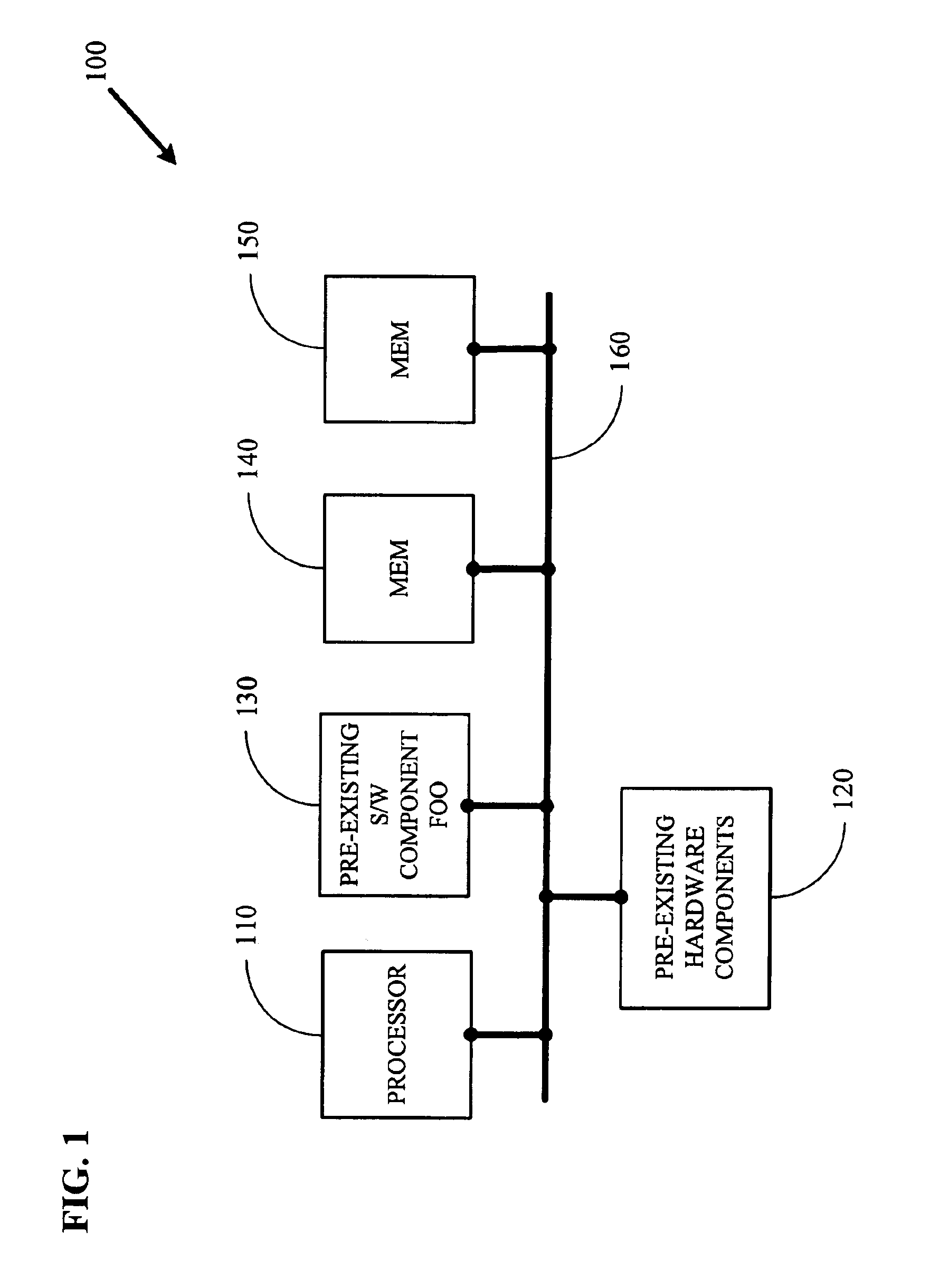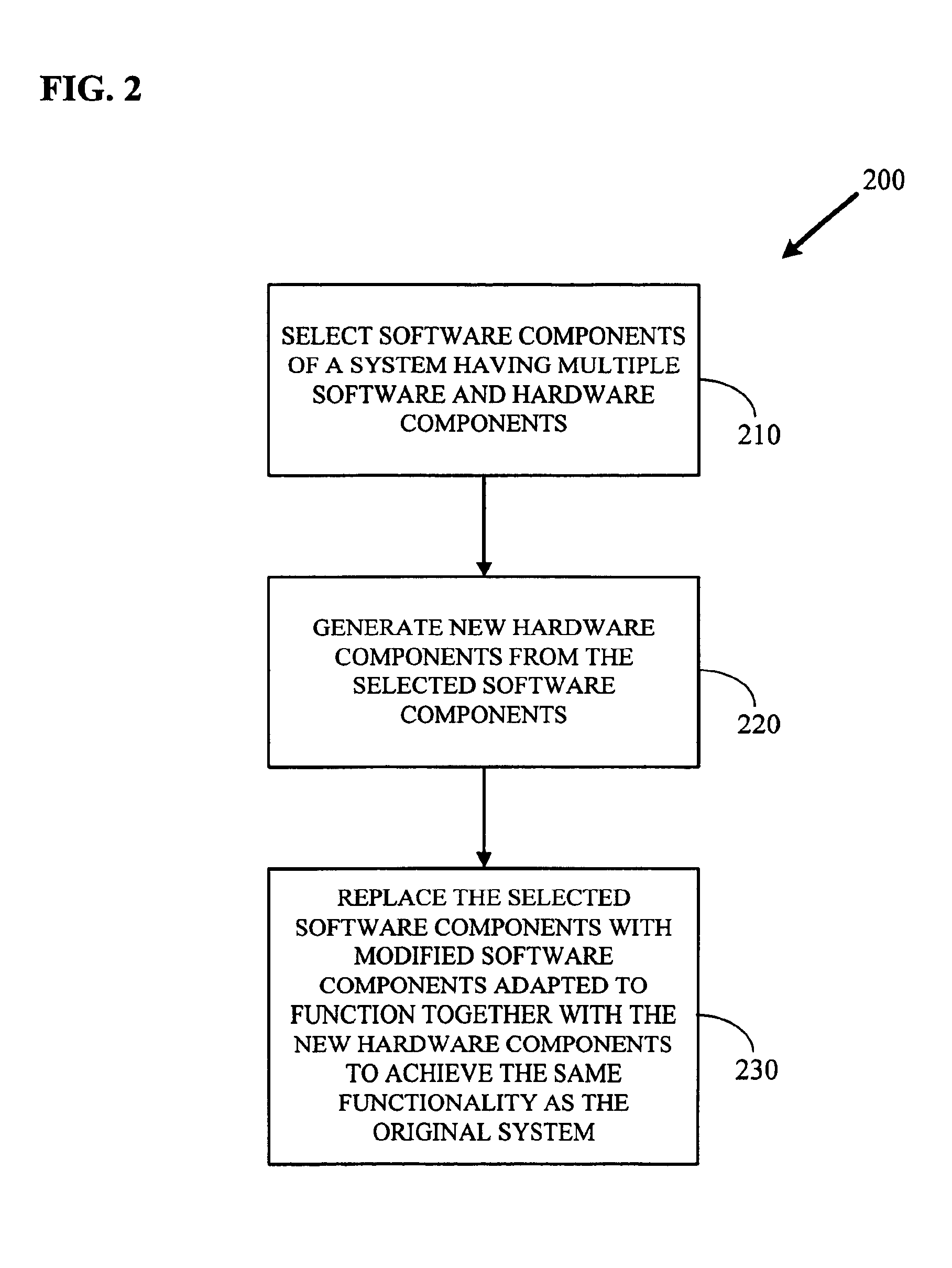Repartitioning performance estimation in a hardware-software system
a hardware-software system and performance estimation technology, applied in the field of electronic system design, can solve the problems of software and hardware components not being tested or verified to see if they functioned together, and the process is time-consuming and cost-intensive, so as to optimize evaluate the impact (on the performance of the system)
- Summary
- Abstract
- Description
- Claims
- Application Information
AI Technical Summary
Benefits of technology
Problems solved by technology
Method used
Image
Examples
Embodiment Construction
In a hardware-software system having both hardware and software components, deciding whether to implement a given function of the system as software or as hardware can impact the system's overall performance. In order to arrive at an optimal system design, a designer may need to select functions originally implemented in software and move them to hardware to improve system performance. This is commonly referred to as “repartitioning” a hardware-software system. Data related to the performance of the system's components may need to be collected and evaluated prior to selecting the functions to be moved from software to hardware. Such performance data may need to be collected and evaluated again each time the system is repartitioned to verify improvements in performance. Several iterations of repartitioning may be necessary before an optimal design is achieved. To achieve design optimization by repeatedly repartitioning and evaluating the system performance may be time consuming witho...
PUM
 Login to View More
Login to View More Abstract
Description
Claims
Application Information
 Login to View More
Login to View More - R&D
- Intellectual Property
- Life Sciences
- Materials
- Tech Scout
- Unparalleled Data Quality
- Higher Quality Content
- 60% Fewer Hallucinations
Browse by: Latest US Patents, China's latest patents, Technical Efficacy Thesaurus, Application Domain, Technology Topic, Popular Technical Reports.
© 2025 PatSnap. All rights reserved.Legal|Privacy policy|Modern Slavery Act Transparency Statement|Sitemap|About US| Contact US: help@patsnap.com



